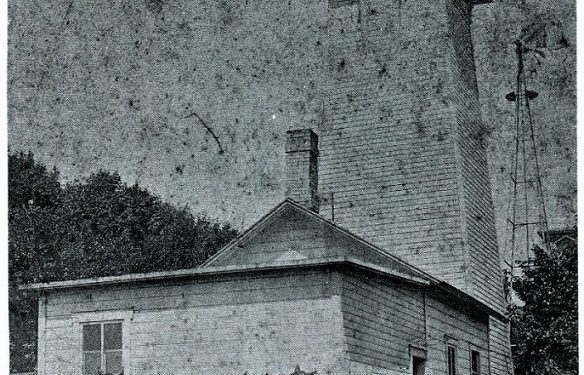Burnside Borough lies at the far southwestern corner of Clearfield County and is surrounded by Burnside Township. It is much diminished in both population and business activity from its heyday of a century or more ago. Burnside straddles state Route 219.
The Susquehanna River’s headwaters begin a few miles south in Cherry Tree. By the latter half of the 19th century, Burnside became a town that relied on logging, rafting and sawmills for its economic vitality. It joined Mahaffey, Lumber City and Curwensville in that regard.
Lumbering brought forth homesteads, businesses, a grist mill, churches and a school in Burnside. The town could boast of some substantial lumbering-based wealth.
The nearby George Atchison home was used as an Underground Railroad stop for escaping slaves, heading north to Canada, during the years leading up to the Civil War.
The Conner family was well known in Burnside. Harry Conner, as a young man, was a lumber raft pilot who made the now legendary trek by water to Marietta, Pa.
Tragically, as an older man, he perished by drowning while piloting the Last Raft, when it crashed into a bridge, in Muncy, in March, 1938.
Burnside’s Conner Park bears the family name. So did a soda factory, which was first operated by John Conner, beginning in 1898.
New technology of the time enabled CO2 to be mixed with flavored water and then bottled in thicker and tempered glass bottles that would withstand the gaseous pressure and then capped. Soda drinking became all the rage at the time.
Many small entrepreneurs felt that if large corporate-owned soda bottlers could succeed, they also could profit and do well in the soda business. Bottlers sent up shop in a number of towns throughout Clearfield County. Houtzdale, itself, was home to over a dozen.
Soda was made and sold locally in rural areas. Shipping bottles of pressured carbonated beverages long distances, by wagon and over rutted dirt roads wasn’t feasible. Conner family members are shown in the photo.
The 1904 photo shows the uniquely-designed Conner soda factory building. According to one Burnside historical source, the equipment was steam driven and the bottles were capped manually with a machine that was operated by a foot pedal.
Cleverly, the windmill in the background pumped water up to a tank, which rested at the top of a wood-sided tower. Gravity would insure a free flow of needed water into the factory. The Conner’s looked to be a hard-working and innovative family.




